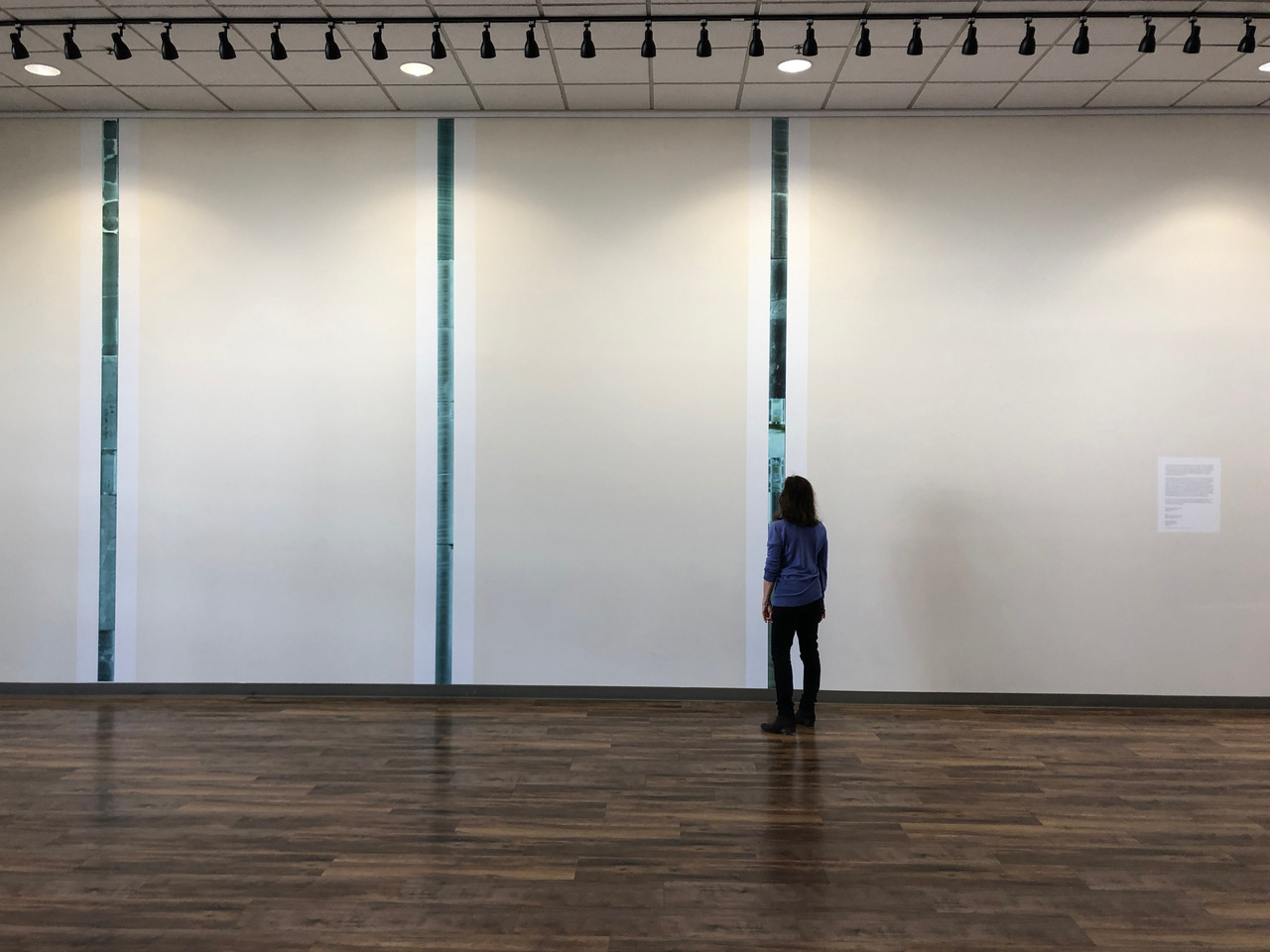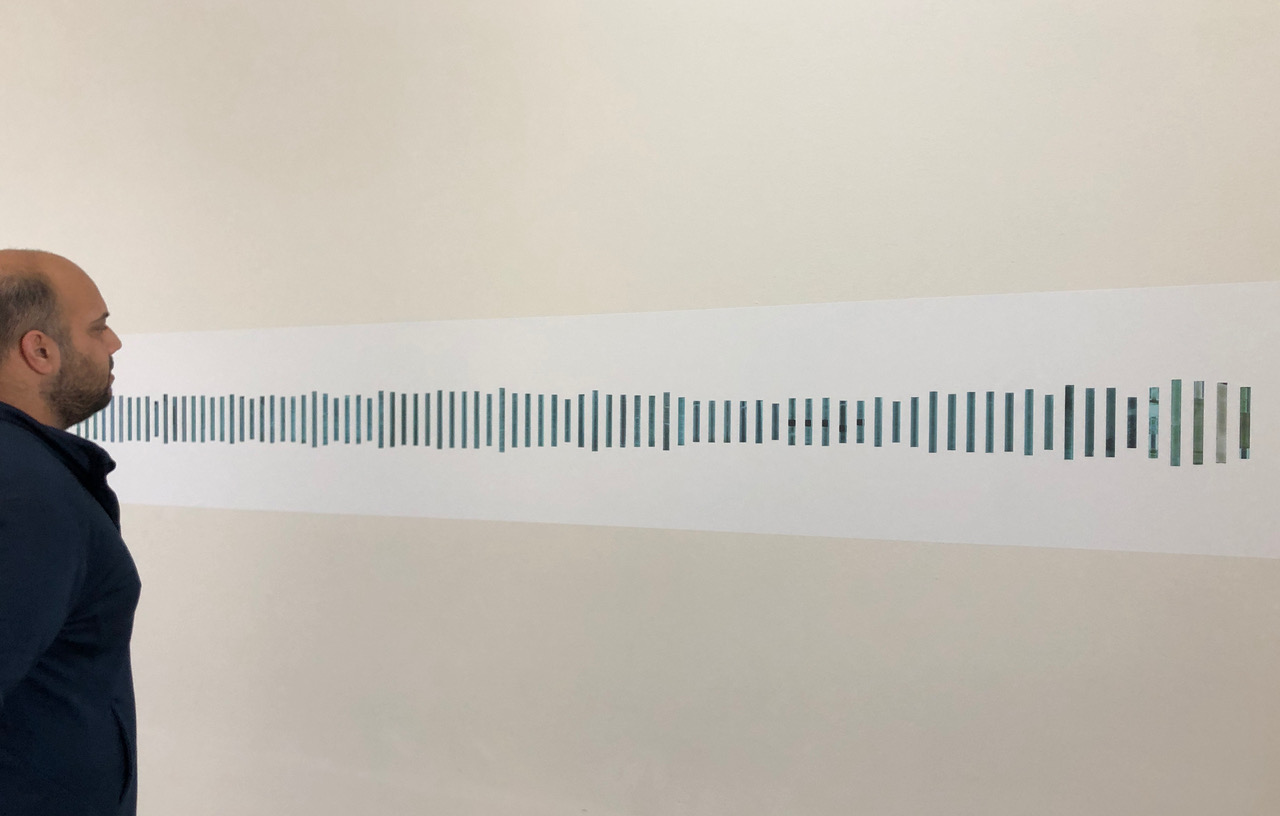88 Cores
Peggy Weil 2019
UCI Viewpoint Gallery
January 29 – February 8th
Images from 88 Cores: From -1 Meter to -3051 Meters, a 4 1/2 hr video descent two miles through the Greenland Ice Sheet going back 110,000 years in time.
Ice cores are known as paleo-thermometers. Ancient winds, infused with pollen, pollutants and ash, carried debris from flowers and fires, foundries and volcanic eruptions, mixing with seasonal snowfall. Over thousands of years the snow was compressed into banded layers of ice. These bands can be counted and dated, like tree rings. Air bubbles trapped within the ice hold ancient air, providing an accounting of ancient atmosphere. This frozen history informs our heated future.

These images are from the GISP2D Ice Core drilled from the Greenland Ice Sheet Project between 1989 and 1993. The core is a time machine through 110,000 years of climate history, descending two miles from the surface to bedrock. The variation in appearance over the 88 core segments is due to several factors: the snow is compressed into layers of ice as a function of depth. Visible banding, dust and debris are indicators of seasonal variation and regional conditions. Size and shape vary according to the condition of an individual core section; the ice may be fragmented or broken.

The cores may be sliced lengthwise with portions distributed to labs for scientific analysis. The digitally scanned images reflect over a decade of evolution in imaging technology between 2004 and 2017. The variation and fragility of the excavated cores echo the vulnerability of polar ice as the Earth warms.88 Cores was first exhibited at The Climate Museum’s inaugural exhibit, In Human Time in NYC. GISP2D Data courtesy of the National Science Foundation Ice Core Facility (NSF-ICF)
